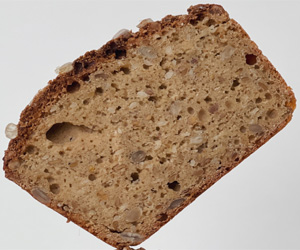


The Joy Of Culinary Creativity

The kitchen is a canvas, and every cook is an artist, experimenting with ingredients, flavors, and techniques to create culinary masterpieces. Kitchen experiments are the heart and soul of this creative process. They are an opportunity to push the boundaries of traditional cooking, explore new horizons, and discover flavors that surprise and delight the palate. In this article, we'll explore the world of kitchen experiments, why they are so essential in the culinary journey, and how they contribute to the evolution of cooking.
Unleashing Creativity: Kitchen experiments are, at their core, a celebration of culinary creativity. They invite cooks to think outside the box, combine ingredients in unconventional ways, and create dishes that are truly unique. It's a space where the boundaries are blurred, and where flavors, textures, and techniques can be harmoniously merged.
Learning And Growth: Kitchen experiments are an invaluable source of learning and growth in the world of cooking. They offer an opportunity to expand one's culinary skills and knowledge. Whether it's trying a new cooking method, experimenting with unusual ingredients, or attempting a complex recipe, these experiments push cooks to develop new techniques and broaden their culinary repertoire.
Culinary Innovation: Some of the most iconic dishes in the culinary world have been born out of kitchen experiments. Creative chefs who dared to experiment with their ingredients and techniques have given us classics like the chocolate lava cake, the Caesar salad, and even the sandwich. Innovation in the kitchen is often a result of daring to explore the unknown.
Flavor Exploration: Kitchen experiments are a gateway to the exciting world of flavor exploration. Trying out new ingredients, herbs, spices, and flavor combinations is an adventure for the palate. It's an opportunity to discover tastes that you might never have encountered otherwise. These flavor explorations can inspire new recipes and provide fresh ideas for cooking.
Culinary Traditions: Kitchen experiments also play a role in preserving and evolving culinary traditions. Many traditional recipes have undergone alterations and variations over time, often as a result of creative kitchen experiments. These adaptations not only keep traditional dishes fresh and relevant but also add new dimensions to culinary heritage.
The Art Of Failure: Kitchen experiments are not always successful, and that's okay. Failure in the kitchen can be just as valuable as success. It provides insights into what works and what doesn't, leading to a deeper understanding of ingredients and techniques. It's an opportunity to learn from mistakes and refine culinary skills.
Personal Expression: Kitchen experiments allow cooks to express their personalities and individual styles. Every kitchen experiment carries the chef's unique signature, reflecting their preferences, creativity, and personal history. It's a form of self-expression that can be shared with loved ones and the wider world.
Kitchen experiments are a vital part of the culinary journey. They offer a canvas for creativity, a space for learning, and an avenue for culinary innovation. Whether you're a professional chef or a home cook, these experiments allow you to push the boundaries of cooking, create memorable dishes, and evolve the world of cuisine. So, embrace the joy of kitchen experiments, and let your culinary creativity run wild, for it's in these moments of exploration and discovery that the true art of cooking shines.
More Than Just Food For The Body
 Nourishing dishes are characterized by their ability to provide comfort and solace. They are often the recipes that offer a warm embrace during challenging times, a source of solace when we seek refuge from the chaos of the world. Whether it's a bowl of hearty chicken soup on a cold winter day, a plate of creamy macaroni and cheese, or a fragrant curry simmering on the stove, these dishes provide more than just sustenance; they offer a sense of well-being.
Nourishing dishes are characterized by their ability to provide comfort and solace. They are often the recipes that offer a warm embrace during challenging times, a source of solace when we seek refuge from the chaos of the world. Whether it's a bowl of hearty chicken soup on a cold winter day, a plate of creamy macaroni and cheese, or a fragrant curry simmering on the stove, these dishes provide more than just sustenance; they offer a sense of well-being.
At the heart of nourishing dishes is the concept of emotional nourishment. These are the meals that evoke feelings of nostalgia, family, and home. They remind us of simpler times, of the loving hands that prepared them, and of the comforting embrace of familiar flavors. Nourishing dishes go beyond filling the belly; they fill the heart and the soul.
One remarkable aspect of nourishing dishes is their versatility. They can be found in virtually every culture and cuisine, reflecting the diversity of the world's culinary traditions.


A Culinary Revolution For Busy Lives
 The Simplicity Of One-Pot Meals
The Simplicity Of One-Pot Meals
One-pot meals, as the name suggests, involve cooking an entire dish in a single pot or pan. This approach significantly simplifies the cooking process, making it accessible to everyone, from seasoned home cooks to kitchen novices. It's a game-changer for those with busy schedules, as it offers a shortcut to hearty, flavorful meals without the need for an arsenal of pots, pans, and utensils.
Why One-Pot Meals?
Here are a few compelling reasons why one-pot meals have become a staple in many households:
1. Time-Saving: One-pot meals are champions of efficiency. By combining ingredients in one pot, you reduce the time spent on food preparation and cleanup, making these dishes perfect for weeknight dinners.
2. Versatility: From pasta dishes and stir-fries to stews and casseroles, the range of one-pot recipes is astonishing.
Where Science And Craft Converge
 The choice of ingredients plays a pivotal role in brewing. Whether it's the selection of coffee beans, tea leaves, hops, malt, or other elements, the brewer becomes a curator, choosing the best raw materials to create a masterpiece. Much like an artist selecting their palette, the brewer's choices will dictate the colors and flavors of the final creation.
The choice of ingredients plays a pivotal role in brewing. Whether it's the selection of coffee beans, tea leaves, hops, malt, or other elements, the brewer becomes a curator, choosing the best raw materials to create a masterpiece. Much like an artist selecting their palette, the brewer's choices will dictate the colors and flavors of the final creation.
Temperature is a critical factor in brewing. The ideal range may vary depending on the beverage and the brewing method, but precision is non-negotiable. A slight variation in temperature can lead to vastly different outcomes. Coffee brewed at the wrong temperature can become over-extracted or under-extracted, while beer fermentation temperatures can profoundly affect the taste and aroma.
Time is another essential element. The brewer must possess patience and timing skills akin to a seasoned chef. The steeping duration for tea, the brewing time for coffee, or the fermentation period for beer all contribute to the final flavor profile. Like a painter, the brewer waits for the right moment to unveil the masterpiece.






Elevating Your Life For A Brighter Tomorrow
 One of the cornerstones of lifestyle enhancement is prioritizing physical health. Regular exercise, a balanced diet, and adequate sleep are fundamental. Engaging in physical activities you enjoy, whether it's a daily walk, yoga, or team sports, can be a source of not only fitness but also joy.
One of the cornerstones of lifestyle enhancement is prioritizing physical health. Regular exercise, a balanced diet, and adequate sleep are fundamental. Engaging in physical activities you enjoy, whether it's a daily walk, yoga, or team sports, can be a source of not only fitness but also joy.
Diet plays a crucial role in overall well-being. Opting for whole, unprocessed foods and staying hydrated can make a significant difference in how you feel on a daily basis. Balance is the key; it's essential to allow for occasional indulgences while maintaining a predominantly nutritious diet.
Celiac Disease, Gluten Sensitivity, And Wheat Allergies
 Common symptoms of celiac disease include gastrointestinal issues like diarrhea, bloating, and abdominal pain, as well as fatigue, anemia, and skin rashes. However, it's important to note that some individuals with celiac disease may experience no noticeable symptoms, making diagnosis challenging. Long-term complications can include malnutrition, osteoporosis, and an increased risk of other autoimmune diseases.
Common symptoms of celiac disease include gastrointestinal issues like diarrhea, bloating, and abdominal pain, as well as fatigue, anemia, and skin rashes. However, it's important to note that some individuals with celiac disease may experience no noticeable symptoms, making diagnosis challenging. Long-term complications can include malnutrition, osteoporosis, and an increased risk of other autoimmune diseases.
Gluten Sensitivity
While celiac disease is a well-defined medical condition, gluten sensitivity, or non-celiac gluten sensitivity (NCGS), is a less clearly understood phenomenon. People with gluten sensitivity experience symptoms similar to those of celiac disease, such as abdominal discomfort, fatigue, and headaches, but do not test positive for celiac disease or wheat allergy. It is often referred to as a "diagnosis of exclusion."
The precise cause of gluten sensitivity remains unclear, but it is thought to be a distinct condition from celiac disease and wheat allergy. Many individuals with NCGS report feeling better on a gluten-free diet, although the mechanism behind these symptoms remains a topic of ongoing research and debate.